
views
Maintaining a Manual Pasta Maker
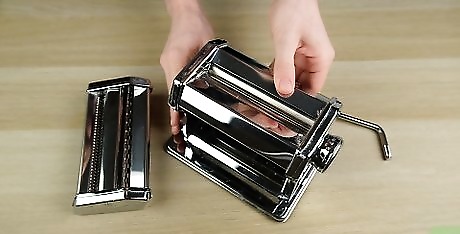
Detach any removable parts from the pasta machine. Most manual or hand-crank pasta machines have a few pieces that can be easily removed. Detach the C-clamp and any attachments, like for different types of pasta, and set them to the side. The rollers are the main part of the machine that need to be cleaned, as they’re the most likely to get gunky with pasta dough. Unless you need to do some kind of mechanical repair, you should not need to actually unscrew and take your pasta machine fully apart.Did You Know? Pasta machines aren’t just for making pasta! Many crafters use them to smooth out and soften pieces of colored polymer clay.
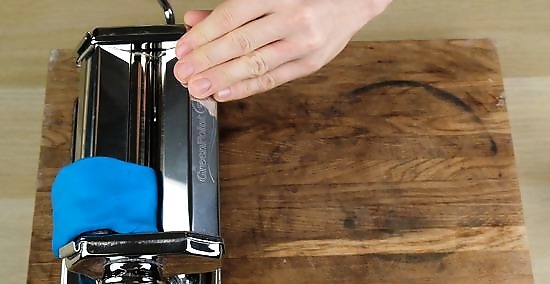
Run a piece of white polymer clay through the rollers 3-4 times. If you don’t have polymer clay, you can use Play-Doh or something similar for the same effect. Move the piece of clay up and down the rollers as you work so that each section gets cleaned. Excess crumbs, flour, and bits of dough will get caught in the polymer clay. If you use your pasta machine primarily for clay work, run this piece of white clay through the machine several times after using different colors. This should help keep the rollers clean and prevent colors from muddling together.
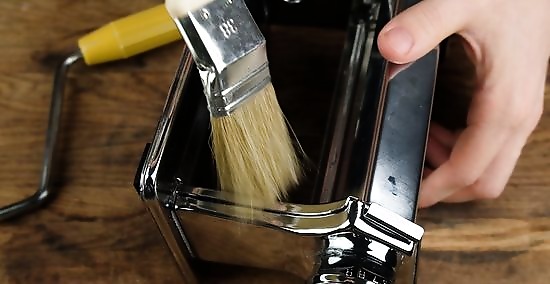
Use a brush or compressed air to clean the crevices of the machine. Flour and bits of dough can easily get caught in the small cracks of the pasta maker. Chances are that your pasta maker came with a small brush with short bristles that can easily get into those cracks. If it didn’t, use a can of compressed air to clear out those parts. The space where the rollers touch the machine are the most likely to have a little bit of build-up, so give them a little extra attention.Take Note: If you have a pasta machine made out of wood, you can stop after this step. Just using the polymer clay and brush should be enough to keep your machine clean and in good order.

Clean the rollers with a clean cloth that is slightly damp with water. Wipe down the top of the rollers and then start to slowly turn the hand crank as you continue to move the cloth back and forth over the rollers. Also, make sure to clean underneath of the rollers by simply rubbing the cloth back and forth over that section. You can also use a wet wipe or a baby wipe. This process can be done with a light hand—there usually isn’t a need for hard scrubbing.

Wipe down the exterior of the entire machine with a damp, clean cloth. If you aren’t using a baby wipe or wet wipe, make sure to wring out the cloth well so that it isn’t dripping wet. Run it over the entire exterior of the pasta maker to clean off flour and little bits of dried dough. If there are smudges or fingerprints, give them a quick rub with the cloth to clear them away.

Dry off the machine completely before putting it away. Use a soft, clean towel to thoroughly dry off the entire exterior of the pasta maker. Opt for a towel that doesn’t carry a lot of lint. Rub away any lingering smudges with the dry cloth—if your machine is stainless steel, they should come away very easily!Warning: Make sure to completely dry your pasta machine after wiping it down. Most pasta machines are made of stainless steel, which will rust if left wet.
Cleaning an Electric Machine
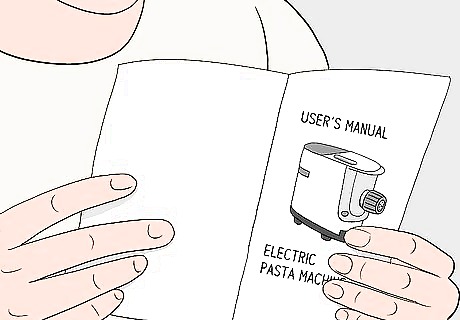
Read the user’s manual before cleaning your electric pasta maker. Every make and model of pasta maker is a little bit different, and most come with instructions detailing how best to maintain your machine. Read through the manual so that you know the ins and outs of your particular pasta maker.Tip: If you no longer have the user’s manual, look up the make and model of your machine online. Chances are you can find a downloadable PDF of the manual to reference.
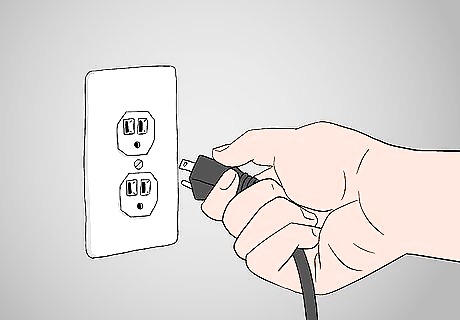
Unplug the pasta maker from the outlet. Never clean your pasta machine while it is still plugged in! Your fingers could get caught in the rollers or you could risk electrocution if the machine were to accidentally get wet in the wrong place while you’re cleaning it. If you’re cleaning the pasta maker near a sink, move the cord far away from it.
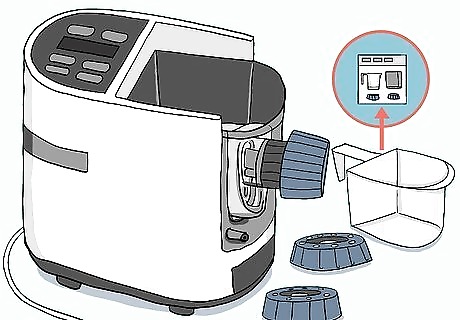
Wash dishwasher-safe parts in the dishwasher. Many pasta makers have detachable parts that can safely be put through the dishwasher, especially if those parts are made of plastic. The actual body of the pasta maker should not be put into the dishwasher. As a general rule, do not put stainless steel parts through the dishwasher. While it may technically be safe, those parts will stay in much better condition if you just wash them by hand.
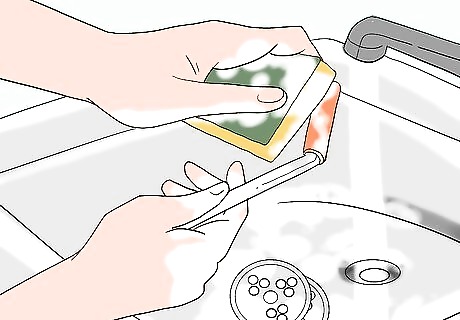
Hand-wash removable parts of the machine if they aren’t dishwasher-safe. Parts made of stainless steel, copper, brass, bronze, or aluminum should be hand-washed. Use dish soap, warm water, and a soft, clean cloth to quickly wipe down the parts and then dry them off thoroughly right after. Keeping the parts of the machine dry is important! Wetness can corrode or rust certain metals, and dampness can encourage bacteria to grow.
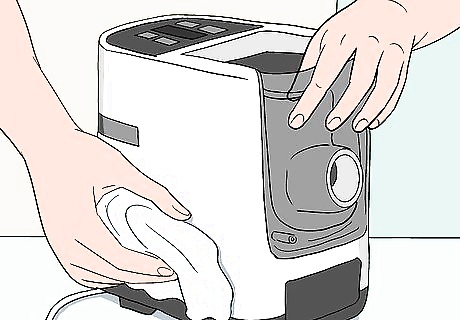
Wipe down the body of the machine with a damp cloth then dry it off. Get a clean, soft cloth wet and wring it out well. Run it over the entire exterior of the pasta maker to clean off flour and bits of dough. Use a second cloth to dry off the machine. If there are tough stains on the pasta machine, spray them with a little bit of all-purpose cleaner and gently scrub them with the soft cloth.Warning: Never submerge your electric pasta maker in water.




















Comments
0 comment